Doto Broker in 2025: Reliability, Licences, Accounts & Comparison with FXPro, AMarkets, RoboForex
Doto is an international CFD online broker that aims to make trading as straightforward and accessible as possible for traders of all skill levels. Launched in 2019, the company has been expanding rapidly, offering Forex, cryptocurrency, stock index and commodity trading through its intuitive proprietary platform and the popular MetaTrader terminals. The minimum deposit is only $15, and the broker charges no fees for deposits or withdrawals, which is especially attractive for newcomers. Regulated by several reputable authorities, including CySEC (Cyprus) and FSC (Mauritius), Doto inspires confidence in its reliability. In this review we examine every aspect of Doto — from available instruments and trading terms to user feedback and comparison with key competitors.
Contents
- What is Doto and what makes it unique?
- Is Doto reliable? (Regulation and licences)
- Which trading instruments are available at Doto?
- On which platforms and devices can I trade with Doto?
- Which account types does Doto offer and how do I open one?
- What are Doto’s trading conditions? (Spreads, commissions, swaps)
- Which deposit and withdrawal methods are supported?
- What level of support and services does Doto provide?
- Pros and cons of Doto: what do reviews say?
- Doto versus competitors: FXPro, AMarkets, RoboForex
- FAQ — frequently asked questions about Doto
- Conclusion
What is Doto and what makes it unique?
Doto is a licensed online broker providing CFD trading across multiple asset classes worldwide. Its core idea is trading simplicity. The Doto platform features a modern, minimalist interface where “nothing is extra”, allowing traders to find functions quickly without complex settings or cluttered menus. The company’s mission is explicit — to simplify trading as much as possible. Doto therefore offers a single standard account with transparent terms: spreads from about 1 pip, zero broker commissions on trades and operations, quick registration and straightforward navigation.
The broker caters to every experience level — from beginners to advanced traders. Beginners get step-by-step guidance on placing their first trade and access to basic educational materials, while seasoned traders value the wide choice of over 130 markets and competitive trading conditions. The company prides itself on its proprietary web and mobile platform, built from scratch on trader feedback: integrated TradingView charts and handy analysis tools. Classic MetaTrader 4/5 terminals remain available for traditionalists.
A key feature of Doto is its low entry threshold. The minimum deposit is just $15, so you can test your trading skills with a small amount. With $15 you can already open positions on major currency pairs or commodities thanks to leverage. Doto charges no fees for deposits, withdrawals or account maintenance. Your only potential costs are spread and swap (overnight financing); there are no hidden broker fees.
Doto also focuses on client safety and comfort: all accounts have negative balance protection (you cannot lose more than you deposit), two-factor authentication (2FA) is available for account access, and support operates 24/7. The broker is a member of The Financial Commission, an independent dispute-resolution organisation whose compensation fund covers up to €20,000 per client. Doto has already gained industry recognition: at iFX EXPO Dubai 2024 the broker won “Best Newcomer Broker” in the Middle East & Africa region. All this underscores that, despite its relative youth, Doto has earned the trust of part of the trading community.
Is Doto reliable? (Regulation and licences)
A broker’s reliability is directly linked to its regulation. Doto is a regulated online broker supervised by several financial authorities in different jurisdictions. This multilayered oversight increases client fund security and operational transparency. The group’s key licences include:
- CySEC (Cyprus Securities and Exchange Commission) – Doto Europe Ltd is registered in Cyprus and, since April 2021, holds CIF licence No. 399/21. CySEC licensing means compliance with EU MiFID II directives, requiring investor-protection rules, capital adequacy, client-fund segregation and participation in the Investor Compensation Fund (up to €20,000 per client). Doto Europe Ltd indeed keeps client money in segregated accounts at reliable banks and meets all EU standards.
- FSC Mauritius (Financial Services Commission) – Doto Global Ltd has Investment Dealer licence No. C119023978. This authorises Doto to serve clients worldwide (with some exclusions) under flexible trading conditions — for instance, leverage up to 1:500 — outside strict EU limits. Although an offshore regulator, FSC Mauritius enabled Doto’s global expansion.
- FSCA (Financial Sector Conduct Authority) – Doto South Africa Pty Ltd holds FSCA licence No. 50451, allowing financial-service provision in the South African region. This boosts confidence among African traders because the FSCA is respected on the continent.
- FSA Seychelles (Financial Services Authority) – Doto International Ltd is licensed as a securities dealer under No. SD0063. The Seychelles licence is also offshore but provides an additional legal base for international operations.
Additionally, Doto Universal Ltd is registered in Saint Lucia (IBC No. 2025-00369) for auxiliary business operations, while partner company MWS Financial Services Ltd, based in Cyprus, handles content and operational activities.
Reliability is further supported by practical client-protection measures. All licences oblige the broker to meet financial-reporting and audit requirements. CySEC, for example, demands regular reporting and a compensation fund in case of bankruptcy. As mentioned, Doto’s membership in The Financial Commission offers extra coverage up to €20,000. Retail clients enjoy negative balance protection — vital when trading with high leverage.
The broker openly publishes corporate information: licence numbers, registration addresses and even licence copies are available on the official site’s “Licences & Regulations” page. Such transparency is a positive sign. Doto also claims strong infrastructure security (server redundancy, data encryption) and segregated client funds in top-tier banks.
Note that Doto is unavailable to residents of certain countries due to regulatory restrictions and internal policy. These include the USA, UK, Canada, Japan, Russia, EU countries (served only via the European entity), and some other regions (Ukraine, Australia, parts of Africa and the Middle East). The full list is on the broker’s website. While disappointing for some, this shows Doto respects international regulations instead of trying to bypass them.
The broker’s reputation is largely positive, although caution is always wise. On Trustpilot Doto holds a 4.5 / 5 rating from roughly 239 reviews, with 94 % scoring 4–5 stars. Users praise platform convenience and reliability. Conversely, WikiFX shows an aggregate score around 5.1 / 10, citing offshore licences and prior client complaints. In late 2022 WikiFX reported around fifteen complaints, mostly about withdrawals. In a high-profile case a client said Doto cancelled $3,000 profit, citing “swap adjustment”. Doto responded that overnight financing adjustments are covered in the terms. Such incidents remind traders to read the fine print (swaps, bonuses, etc.) and start with small amounts to test the broker. No widespread non-payment issues are publicly documented; most clients trade and withdraw successfully.
Bottom line: Doto shows a high degree of compliance with international standards. Four licences, Financial Commission membership, transparent support and largely positive user feedback weigh in its favour. While younger than some rivals (e.g., FxPro dates from 2006), Doto’s first five years have been successful — the company is growing fast, exhibiting at expos and strengthening its reputation. With sensible risk management, traders can consider Doto a dependable online broker.
Which trading instruments are available on Doto?
Doto offers a broad range of CFD trading instruments covering the world’s major financial markets. With a single account you gain access to dozens of currency pairs, global stock indices, commodities (both raw materials and metals) and digital assets. This makes diversification easy—you can trade multiple asset classes through one online broker. Let’s look more closely at the main categories:
- Forex: You can trade 81 currency pairs, including all the majors (EUR/USD, GBP/USD, USD/JPY, etc.), most popular crosses (EUR/GBP, AUD/JPY and so on) and a selection of exotics from emerging-market currencies. Doto’s leverage on Forex reaches up to 1:500 for major and some minor pairs, allowing you to control sizeable volumes with a modest margin (remember: higher leverage equals higher risk). Exotic pairs are usually capped at 1:100 due to their greater volatility. Spreads on the majors are floating, starting from roughly 1.2 pips on EUR/USD in calm conditions. All pairs trade 24 hours a day, five days a week (the Forex market closes for the weekend).
- Commodities: Doto lets you trade CFDs on 17 commodity assets, including metals and energy. Precious metals feature gold (XAU/USD) and silver, while industrial metals include aluminium, zinc, platinum, palladium and nickel. In energy you will find Brent and WTI crude plus natural gas, among others. Leverage depends on the market: up to 1:100 on gold and major metals, around 1:25–1:50 on oil and gas—a standard approach given commodity volatility. Most products trade almost around the clock on weekdays (with brief clearing breaks). Doto’s spreads are competitive: roughly $0.20–$0.30 on gold (≈ 2–3 pips) and about $0.05–$0.10 on oil, commission-free.
- Stock indices: The broker lists 12 key benchmarks from Asia, Europe and the US, such as the S&P 500, NASDAQ-100, Dow Jones, DAX 40, FTSE 100 and Nikkei 225. Index CFDs let you speculate on the overall equity market of a country or sector. Doto provides leverage up to 1:200—generous for markets that are typically less volatile than individual shares. Trading sessions follow the underlying exchanges: US indices from late morning to night Moscow time, European indices during the day, Asian indices early morning. Trader feedback points to moderate spreads; one user praised trading JP225 but mentioned overnight swaps.
- Cryptocurrencies: You can trade CFDs on 19 crypto assets, including Bitcoin, Ethereum and popular altcoins such as Litecoin, Ripple, Bitcoin Cash and EOS. Pairs are quoted against USD. Leverage is limited to 1:20—reasonable given crypto’s volatility. A big plus: crypto trades 24/7, even at weekends when traditional markets are closed. Spreads are wider than on Forex (for example, an average $30–$50 spread on Bitcoin, typical for CFD providers) and overnight swaps should be factored in, especially on crypto positions.
- Shares (stock CFDs): At the time of writing, Doto was preparing to add commission-free stock CFDs. According to the broker, popular US and European names (Apple, Tesla, Amazon, etc.) are planned. “Commission-free” means Doto will earn through the spread only. Although stocks are not yet live, the presence of a “Stocks” tab on the site suggests a launch is imminent—broadening Doto’s line-up to cover all the main asset classes (Forex, Commodities, Indices, Crypto, Stocks).
Besides the instruments listed above, Doto focuses on straightforward CFDs; it does not offer direct options or futures, which is standard for a retail CFD provider. Nor does it list niche products such as ETFs—competitors like RoboForex already offer ETF CFDs, while Doto does not yet. Managed accounts and PAMM services are also absent, as Doto positions itself for self-directed traders.
Overall, Doto can be called a universal CFD trading platform: more than a hundred instruments are available. You could trade Asian indices in the morning, European currencies or gold during the day, and crypto at night. This breadth is valuable for anyone seeking diversification or near-round-the-clock trading. In market coverage Doto holds its own: FxPro offers about 210 instruments (including stocks), AMarkets roughly 250, and RoboForex the widest—thousands of CFDs and real shares on a separate platform. With 130+ instruments Doto sits in the mid-range, sufficient for most private traders.
Leverage at Doto is flexible and depends on the instrument and your jurisdiction. The maximum 1:500 is available via the international entity (Mauritius, Seychelles) on Forex and certain CFDs. If you register under Doto Europe (CySEC) you are limited to 1:30, as EU regulations require for retail investors. The broker automatically applies the correct limits by client country. In my experience trading via Doto Global, I could use 1:500 on EUR/USD—about $200 margin per lot—though I don’t advise novices to max out leverage because losses can escalate quickly.
Trading conditions are attractive: spreads are floating and mostly competitive. While Doto does not advertise ultra-tight 0.0 pip spreads like some ECN brokers, there are also no commissions—simpler and often cheaper for small volumes. For example, a 1.2-pip EUR/USD spread with no commission works out at roughly $12 per lot, a bit above the market average according to Traders Union, yet perfectly acceptable for swing trading. Spreads on crypto and exotic assets are naturally wider; that’s the cost of trading them conveniently on one platform.
In short, Doto’s instrument list will suit most traders focused on Forex and CFDs. The broker is especially appealing to those who trade crypto 24/7 or combine currency and equity strategies. If you need specialised products such as ETF CFDs or hundreds of stocks, compare with other providers (RoboForex and Exness already list many shares and ETFs). Given Doto’s stated expansion plans, stocks are likely on the way—taking its versatility up a notch.
On which platforms and devices can you trade with Doto?
A major advantage of Doto is platform choice. The broker provides both its own modern solutions and the industry-standard MetaTrader terminals. That means every trader can access the markets in a convenient way—via computer, smartphone or web browser.
- Doto’s proprietary platform (WebTrader and mobile apps).
Doto takes pride in its in-house platform, offered in two flavours: a web terminal (runs in any desktop browser, no installation) and the Doto mobile app for iOS and Android. Both share a single design and stay synchronised—you can open a trade in the web version and close it on your phone, and vice versa.
Key features of the Doto platform:
- Intuitive interface. On first login a short tutorial walks you through opening a trade and setting stop-loss and take-profit. The layout is uncluttered: the chart is central, Buy/Sell buttons and volume fields are directly below—easy to see. One trader used to overloaded terminals said he was “surprised everything is so clean”, then decided simplicity is a plus. Nothing distracts from trading and the platform delivers market access without glitches.
- TradingView charts built in. Doto integrates popular TradingView widgets, giving high-quality price charts and a wide set of technical indicators and drawing tools right inside the web platform. Switching timeframes and adding indicators (moving averages, RSI, Bollinger Bands, etc.) is straightforward. Advanced analysts may miss a few niche indicators or custom scripts—this is an integration, not full TradingView Pro—but for most users it’s enough.
- Simple order management. When opening a position you’re prompted to set stop-loss and take-profit immediately—a good risk-management habit. Market, limit and stop orders are all available. Execution is Market Execution with minor slippage possible (standard for STP brokers). Reviews note fast fills—fractions of a second with no systematic requotes. My own experience in Doto WebTrader was similar; trades executed instantaneously, though spreads widen during major news.
- Doto mobile app. For traders on the go, the Doto app (App Store and Google Play) is handy. The description mentions “AI-powered market predictions”; in practice there’s an analytics tab with succinct forecasts and signals likely generated by an algorithm. The mobile UI mirrors the web version: clear, lightweight and fast. A dark theme is available—one user highlighted “Dark theme – a big one for me”. Push notifications for price alerts and news can be enabled, which helps you react quickly.
- Platform limitations. In pursuit of simplicity the developers removed certain “bells and whistles” that MetaTrader users expect. There’s no built-in news feed or economic calendar (Doto posts news on social media and its blog). Algorithmic trading is unsupported—the Doto platform is designed for manual trading only—and social trading/copying is absent. Some experienced traders miss tools like calculators, extensive analysis or integrated trade signals. Doto intentionally left these out to keep the interface light. In short, Doto’s own platform is excellent for active manual trading and basic analysis, but for robots or deep analytics you’ll want MetaTrader or another service.
- MetaTrader 4 and MetaTrader 5.
Understanding that many traders are conservative in software choice, Doto also supports the world-famous MT4 and MT5 terminals. MetaTrader is the industry standard, especially in Forex. Doto offers desktop MT4/MT5 for Windows/Mac, MetaTrader mobile apps, and MetaTrader WebTrader (browser-based).
MT4 vs MT5: MT4 is older and focused mainly on Forex, using a hedging position system (each trade separate). MT5 is newer, supports netting (useful for equities), has a more advanced strategy tester and more built-in indicators. Most Forex traders still use MT4 out of habit, but the market is shifting toward MT5; Doto provides both so the choice is yours.
Advantages of MetaTrader with Doto: a full suite of professional tools—dozens of indicators, expert advisors (trading robots) and algorithmic strategies (especially on MT5 with MQL5). Experienced traders can deploy their own EAs or third-party signals. Doto allows algorithmic systems on MetaTrader, consistent with its STP model. MetaTrader also lets you customise layouts, use chart templates and position-management scripts—flexibility that Doto’s native platform lacks.
How MT4/MT5 work at Doto: the broker supplies login credentials for its servers (e.g., DotoGlobal-Demo). Connection is standard; execution is Market Execution. Hedging is permitted (you can hold BUY and SELL on one instrument). Scalping is not officially banned, though some aggregators list “scalping: no” for Doto. User reports indicate fast trades and pip-scalping are allowed as long as you avoid obvious arbitrage or violations. Liquidity comes from Doto’s providers, so spreads and execution are generally solid.
I personally found it convenient to analyse complex indicators in MT5 while placing trades quickly in Doto WebTrader—the same account syncs across both.
- Devices and compatibility.
You can trade with Doto on virtually any modern device:
- Desktop (Windows, macOS) via installed MT4/MT5 or the browser-based Doto web platform (no installation, works in all major browsers).
- Smartphone or tablet via the native Doto apps (Android, iPhone/iPad) and MetaTrader 4/5 apps. The Doto web terminal is mobile-responsive too, though a small screen is less convenient than the app.
In short, Doto gives full freedom—you’re not tied to a desk, just an internet connection. I monitored positions from the Doto app while away from home and could quickly open or close trades. The mobile app feels smooth, with helpful touches like fingerprint login for swift authentication.
Platform verdict: Doto clearly aims to please a wide audience. Beginners will appreciate the simple web terminal with tooltips, while advanced users can rely on MetaTrader’s rich functionality. The only things missing are alternatives like cTrader or a standalone TradingView Terminal, but with MT4/5 available they’re hardly necessary. Doto’s focus on its own platform shows a desire to build an ecosystem where users can learn and trade in one convenient interface—and reviews suggest many traders like this approach: “Their custom trading app is lit – fast withdrawals and low trading costs,” notes a trader from South Africa. Professionals will still keep MetaTrader handy for analysis or specialised tasks, but Doto’s willingness to offer choice underscores its client-centric ethos.
What account types does Doto offer and how do you open one?
Account types. Unlike many competitors that roll out a full line-up of plans (Standard, ECN, Pro, Cent, etc.), the Doto online broker follows a straightforward model and provides a single live account (Real) for every client. In practice all traders work under identical conditions: floating spreads from about 1 pip, zero turnover commission, STP execution, account currency – USD. There is no split into “VIP terms” for large deposits or special scalping accounts – the universal Real account covers every need. That is handy for beginners who no longer have to puzzle over which type to choose. On the flip side, advanced traders may lament the absence of, say, a raw-spread ECN account or a cent account for micro-size trading. Doto really does not offer cent accounts (balances displayed in cents, inflating the figure 100×) – the minimum lot is 0.01 and the balance unit is $1, which can feel a bit lofty for ultra-conservative strategy tests. Still, 0.01 lot on EUR/USD equals roughly €1,000 of the base currency, i.e. about $10 margin with 1:100 leverage – affordable even for a $15 deposit.
Apart from the live account, a demo account is available. Doto automatically sets one up at registration with $10 000 in virtual funds. The demo terminal fully mirrors market conditions (quotes are identical to the live feed; trades simply do not hit the market). A demo is invaluable for training: you can practise without risking real money. Note, however, that an MT4/MT5 demo at Doto is deactivated after 30 days of inactivity (a platform-level constraint). On the Doto web platform the demo is unlimited – you can reset the balance or open a new demo in the dashboard whenever you “blow up” the virtual funds. Bear in mind the psychology of demo and live trading differs, yet for strategy trials or platform familiarisation the demo mode is extremely useful.
Account currency. All Doto accounts are denominated in USD. Other currencies (EUR, GBP, RUB, etc.) may be available to residents of specific countries. This means that if you deposit, say, euros, your funds are converted to dollars at the prevailing rate. Many international brokers choose USD as a universal account currency. The downside is the extra conversion step on deposits and withdrawals (and potential FX differences); the upside is convenience when trading dollar-based instruments and transparent accounting, since the dollar is the world’s reserve currency. Plan accordingly – your account will be dollar-based.
How to open an account with Doto? The process is streamlined and 100 % online. Here are the main steps to get started:
- Create a profile. Go to the official Doto site (via the link on our website or directly at doto.com) and click “Sign Up”. Enter your e-mail and a password, or register via social media if offered. The sign-up really takes a couple of minutes – I completed it in only two steps. After confirming your e-mail your personal area will be ready.
- Fill in personal details. In the dashboard the new user completes a questionnaire: full name, date of birth, country of residence, address. You may also be asked about trading experience and financial status (required by KYC/AML and MiFID rules to assess your risk profile). Provide truthful information – it is confidential and needed for the broker and regulators.
- Identity verification. Like any regulated trading platform, Doto will ask you to confirm your identity and address. Upload scans/photos of your passport or national ID (proof of identity) and, for example, a utility bill or bank statement showing your address (proof of residence). A selfie with the document or a short video may also be required as an anti-fraud measure. In my case the review took about 24 hours, after which the account status changed to “verified”. Tip: make sure the copies are clear, not cropped, and fully readable – verification then goes smoothly.
- Open a trading account. Once verified you can open a live trading account (Real – there is only one). The system usually prompts you automatically. Select the platform (e.g. “Doto Platform” or “MetaTrader 5” – a Doto account is linked to a platform, but you can connect it to another later), choose leverage (maximum by default, you can pick less) and confirm. The account will be assigned a number. You will see your accounts, balances and details in the dashboard.
- Fund your deposit. To start live trading, deposit funds. The minimum is $15 – even bank cards allow that small amount. Pick the method (card, e-wallet, crypto – more on this in the next section) and follow the prompts. Most methods credit instantly or within 15 minutes. After the deposit your balance appears and you can start trading.
- Start trading. Switch to the platform tab – either the Doto web terminal or your MT4/MT5 using the issued credentials. Confirm that funds have arrived, select an instrument and place your first trade. For new traders I recommend beginning on the demo or with minimum sizes to feel the mechanics. Don’t forget to set a stop-loss to protect capital.
That’s all – opening an account at Doto is genuinely simple. From personal experience: registration, verification and funding took me roughly one day (the document review being the longest part) and I executed my first live trade the next day. Doto occasionally runs promotions to ease entry – for instance, a first-deposit bonus (up to 50 %), though you usually must reach a turnover threshold before withdrawing the bonus. A demo account is opened automatically at registration, so you can trade virtually right away with no paperwork.
Important: Doto, like all regulated brokers, requires that the funding and withdrawal method belongs to you personally. Use only your own cards and wallets – the name on them must match your Doto profile. This safety rule prevents money-laundering and protects you from fraudulent payouts to third parties.
In the end the Doto account structure is crystal clear – one account type, one currency (USD), flexible leverage and standard conditions for everyone. It is an honest, transparent approach, although some may miss a variety of plans. For comparison: AMarkets offers three account types (Fixed, Standard, ECN), RoboForex offers five (Pro, ECN, ProCent, Prime, R Trader). Doto breaks the industry trend of multi-level offers, and in my view this simplicity fits the broker’s strategy – Simple trading starts here, as the slogan on their site says.
What are Doto’s trading conditions? (Spreads, fees, swaps)
Trading conditions determine how much a trader pays for each deal and which rules govern the process. In Doto’s case the terms are competitive for its segment, though there are nuances. Let’s examine the key points: spreads, commissions, swaps, leverage, order execution, and so on.
- Spreads: Doto follows a commission-free revenue model via the spread. The broker charges no separate per-lot fee; its income is embedded in the small difference between bid and ask. Minimum spreads are quoted from about 1.0–1.2 pips on major forex pairs. In practice the EUR/USD spread often sits around 1.2 pips, GBP/USD about 1.5 pips, USD/JPY ~1.2 pips, and so forth. These values are floating: during high-liquidity sessions (European/US) spreads are minimal, while in the quiet Asian night they may widen (to 2–3 pips on majors). For CFDs the spread is expressed in points of the underlying: e.g. gold ~\$0.25, oil ~\$0.05, S&P 500 about 0.5 index points. Because Doto has no alternative account types, there is nothing to compare a “floating-spread account” against – everyone trades on the same terms. According to Traders Union, the average all-in spread at Doto equals roughly \$12 per standard lot on EUR/USD, which is toward the high side of the market (average ≈ \$7–8; low ≈ \$1–3 on ECN). Yet where the spread is \$1, a commission is usually charged separately. Doto has no commission, so for retail traders with small volume the difference is minor. Moreover, 1–1.5 pips is acceptable for most strategies (except perhaps ultra-fast scalping that cares about every tenth of a pip). In my own use, trading modest sizes, I did not feel the Doto spread was an obstacle – it matched what I see at other popular brokers with similar accounts.
- Commissions: As noted, Doto charges no commission on trading turnover on any account. Opening and closing a position incur no fixed fee. The exception is swaps, discussed below. Funding and withdrawal are also free (the broker absorbs payment-system costs). There are no account-maintenance or inactivity fees. Remember the spread is effectively a commission, just not quoted separately. So “0 % commission” means no extra charges on top of the spread. In plain English: Doto’s trading commission = 0, trading spread ≈ from 1 pip. This model is often cheaper and simpler for new traders who place relatively few trades – they avoid extra fees.
- Swaps (overnight financing): Doto, like every trading platform, applies an overnight fee for carrying positions into the next day. The swap depends on the instrument and the direction (long/short). On forex it is close to the interest-rate differential plus the broker’s markup. For EUR/USD the swap might be negative for both long and short, e.g. –\$6/–\$1 per lot (illustrative). Crypto swaps tend to be high (up to 15–20 % p.a. in daily terms) because the broker must cover its own liquidity costs. Doto states this fee openly; it is also called rollover. One client review complained that Doto debited a large amount explained as swaps when the position was profitable. Probably the rollover coincided with a big market move or dividend adjustments on indices. Recommendation: always check the swap for a given asset in the contract specification (on the site or from support). If you plan to hold positions for days, factor the cost in. Intraday traders can ignore swaps; position traders cannot.
- Leverage: The maximum leverage at Doto is 1:500 (for global clients). The trader can choose a lower ratio when opening the account to reduce risk. Different assets have their own caps: up to 1:500 on forex, 1:100 on gold, 1:200 on indices, 1:20 on crypto, etc. Leverage is flexible: you can enter any reasonable volume as long as margin suffices. Margin thresholds are Margin Call – 100 %, Stop Out – 50 %. At 100 % free margin hits zero and you are warned; at 50 % the system starts closing the worst-losing positions to prevent a negative balance. These levels are standard (some brokers set Stop Out at 20–30 %, but 50 % is more conservative). Negative-balance protection guarantees that even if a gap sends the balance below zero, Doto will reset it – crucial when using 1:500 leverage.
- Execution speed and quality: Doto says it uses an STP/NDD model – orders go to liquidity providers directly with no dealing-desk interference. Liquidity is aggregated via partners, so slippage can occur but is market-driven (positive or negative). Average execution is in milliseconds – a client from South Africa noted the execution speed is acceptable, another measured ~30–50 ms, which is very fast. In my case orders were filled instantly on moderate volumes (0.1–0.5 lot forex). Even on news releases I saw no requotes – the spread simply widened briefly. Execution type is Market (price not guaranteed, fill is guaranteed); requotes are fundamentally absent.
- Restrictions on trading styles: Scalping is not prohibited (AMarkets even states its ECN suits scalping, and Doto’s accounts are effectively STP/ECN, so scalping is allowed). Hedging (opposite positions) is permitted; I checked. Expert Advisors and algorithms are allowed on MetaTrader, though not in Doto’s own platform. Non-trading fees: It is welcome that deposits and withdrawals are free – Doto absorbs the costs. There is no inactivity fee – you can stay on the sidelines for months without penalty, unlike brokers that charge $10–50 monthly when dormant.
- Bonuses and promotions: Trading conditions usually exclude bonuses, but Doto sometimes offers a deposit bonus. Currently the site advertises a “deposit bonus up to 50 %” of the deposit amount. Deposit $100 and get +\$50 bonus credit, so your trading balance becomes \$150. The bonus lets you open larger trades but cannot be withdrawn until certain turnover is met. Doto had not offered bonuses before, yet competition pushes many offshore brokers to give 30–100 % bonuses, so Doto followed suit. Treat bonuses with care: they raise leverage and impose conditions. Read the bonus agreement before accepting. Still, their presence can please traders who enjoy such programs.
To summarise: Doto’s trading costs consist of the spread and the swap. No direct commission is charged. Spreads float from 1 pip – not rock-bottom, yet not prohibitive. For reference: FxPro standard accounts average 1.4 pips on EUR/USD (no commission), AMarkets Standard ~1.3, RoboForex Pro ~1.4 – Doto sits in the same band. Brokers with commissions (ECN accounts) can achieve an equivalent spread under 1 pip but then charge \$6–7 per lot. For many newcomers it is simpler and often cheaper to use Doto’s model with a slightly wider spread but no commission – it is transparent and needs no complex maths.
Swaps at Doto are industry-standard; if you don’t hold positions for weeks they won’t bite. Isolated complaints (such as swaps on indices) highlight the need to watch calendar events. Index trading can trigger swap adjustments on dividend dates, and traders sometimes overlook these charges. Doto makes such adjustments like every CFD broker – they are market costs, not “stolen profit”.
In terms of leverage and margin Doto provides maximum flexibility (especially outside the EU). This attracts aggressive traders, but we advise against using 1:500 fully – a few bad trades can wipe out the deposit.
Example of the conditions in practice: Suppose you open 0.1 lot on EUR/USD. The spread is 1.3 pips – that’s about \$1.30 cost. No other commission applies. Hold the position overnight – swap, say, –\$0.50. Next day you close the trade with a 20-pip profit = \$20. Result: \$20 income, \$1.8 costs, net profit \$18.2. Effective fee roughly 9 % of profit – around the market average. If you were scalping for 2–3 pips per trade, the spread would eat a larger share. But Doto is not marketed as an ultra-scalping ECN (for that you’d pick a raw-spread account elsewhere). For intraday and swing trades the conditions are very comfortable and transparent.
Overall, Doto’s trading environment stands out for simplicity and the absence of hidden charges. All costs are easy to forecast. My years in the market tell me: sometimes it is wiser to pay a bit more spread to a trustworthy broker than to chase microscopic spreads at a shady shop where you might later struggle to withdraw profits. Doto, by all accounts, delivers honest execution and smooth withdrawals – more important to a trader than saving an extra dollar on spread. As one FPA user put it: “Doto accomplished its main task of giving access to the markets and not screwing with withdrawals. Other stuff is just an addition.” – the broker’s core job is market access and hassle-free payouts; everything else is secondary. In that sense Doto deserves praise.

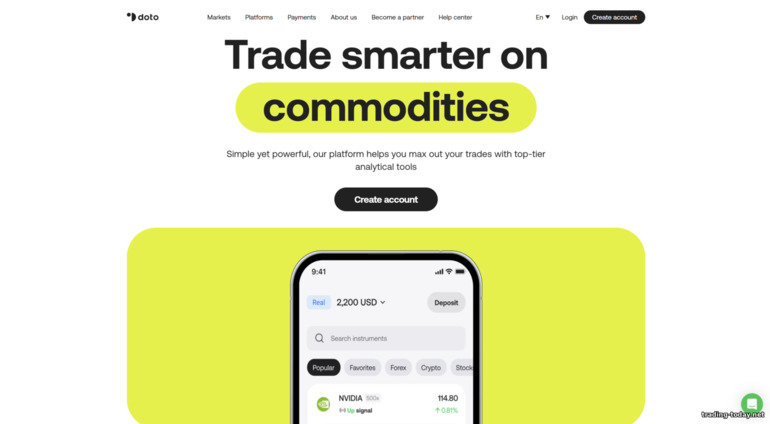
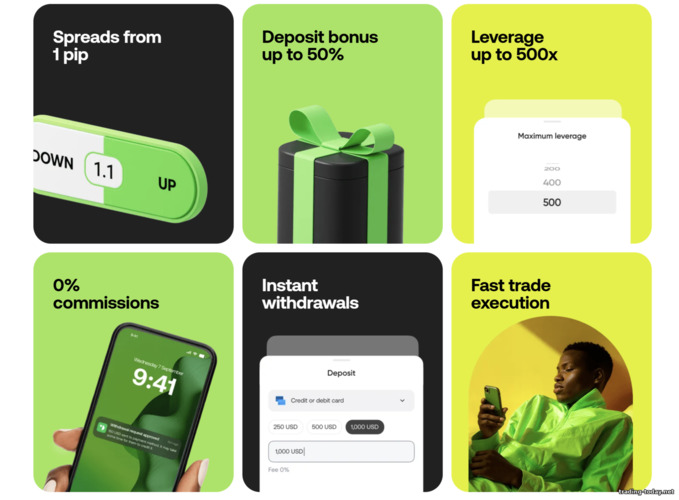
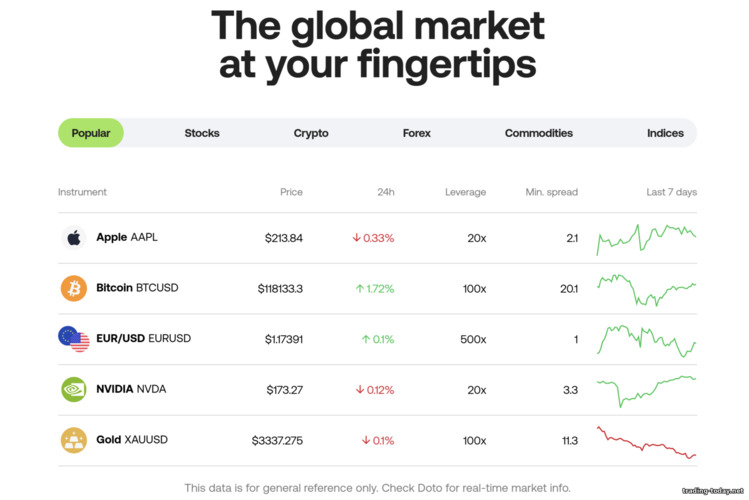

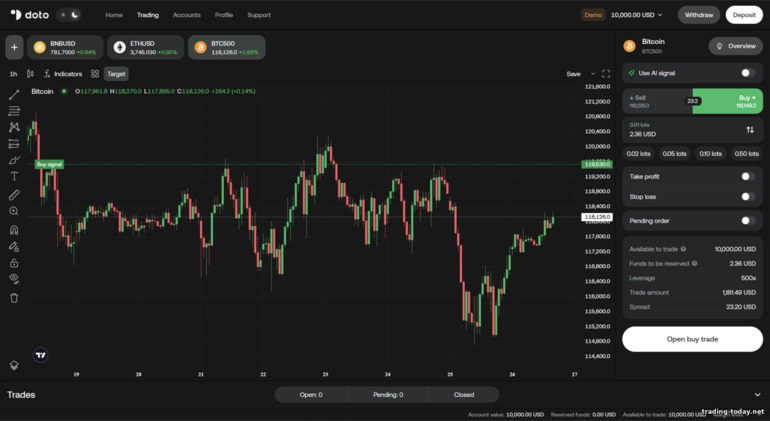
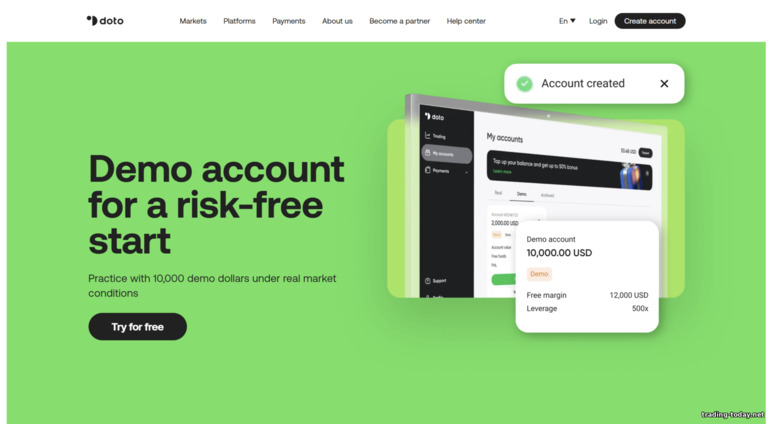
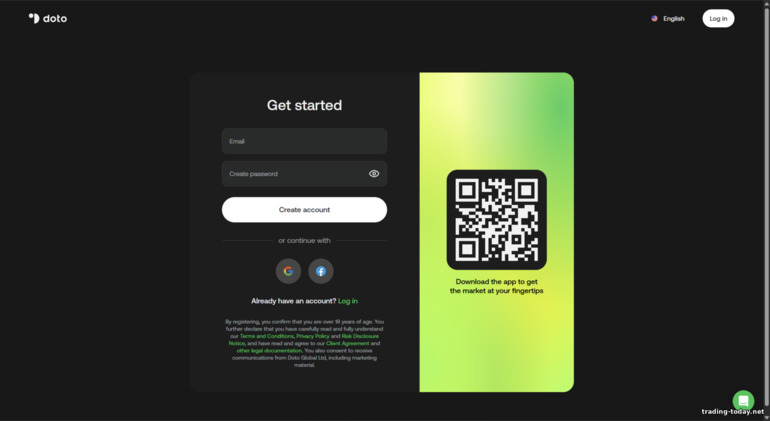
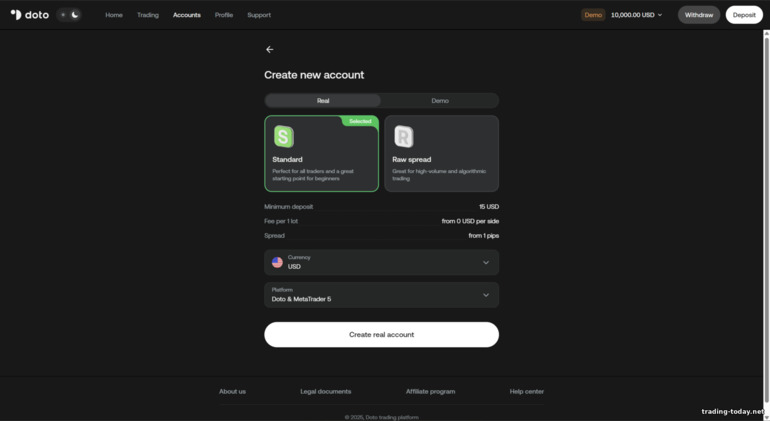
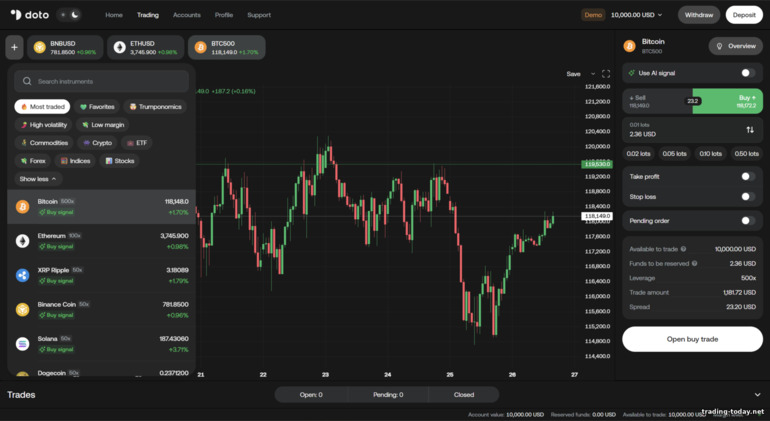
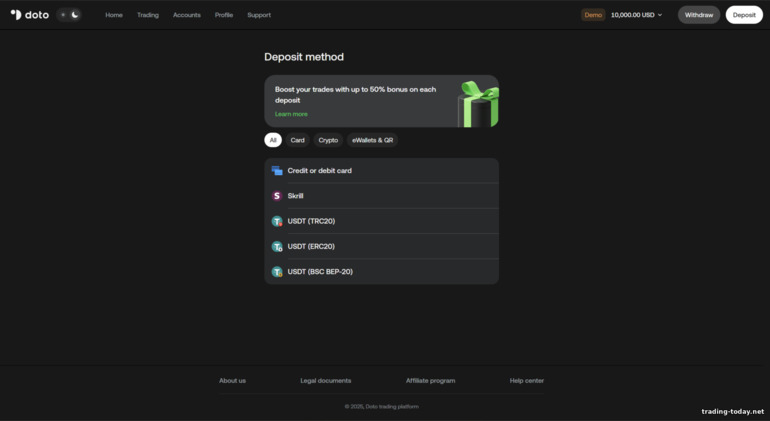
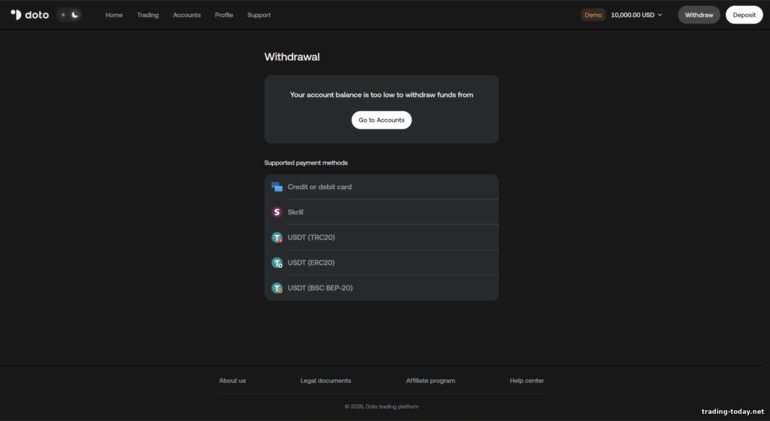

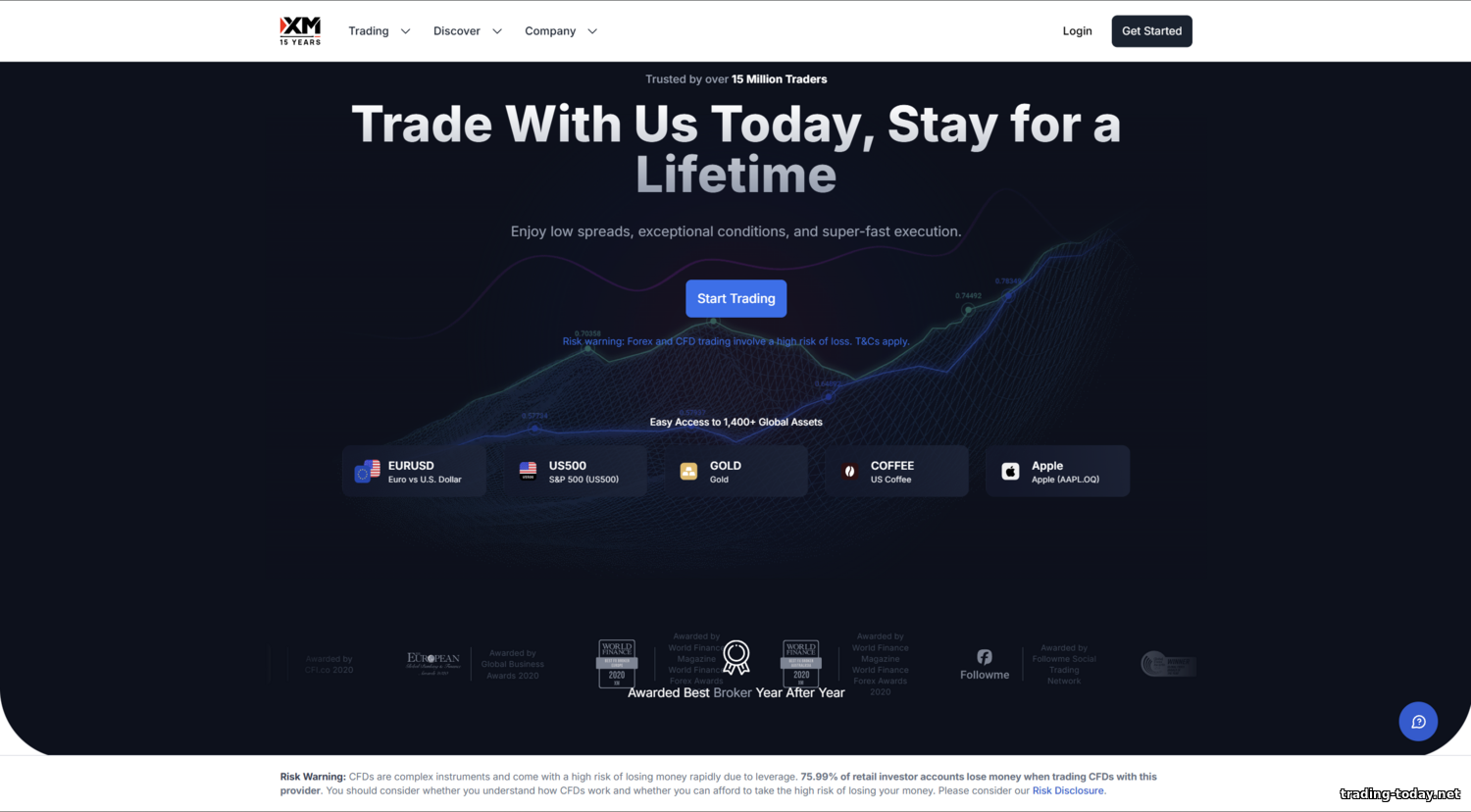
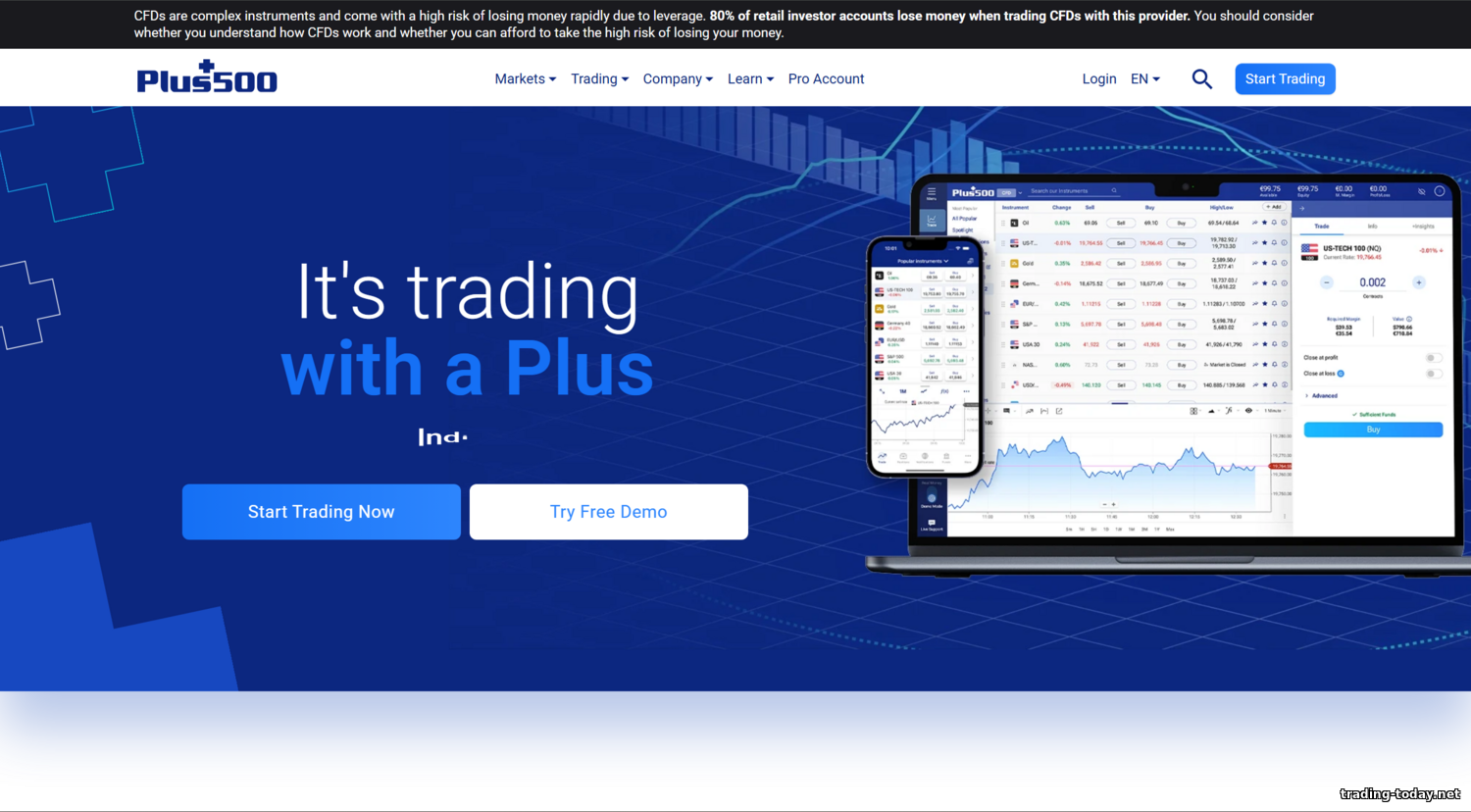
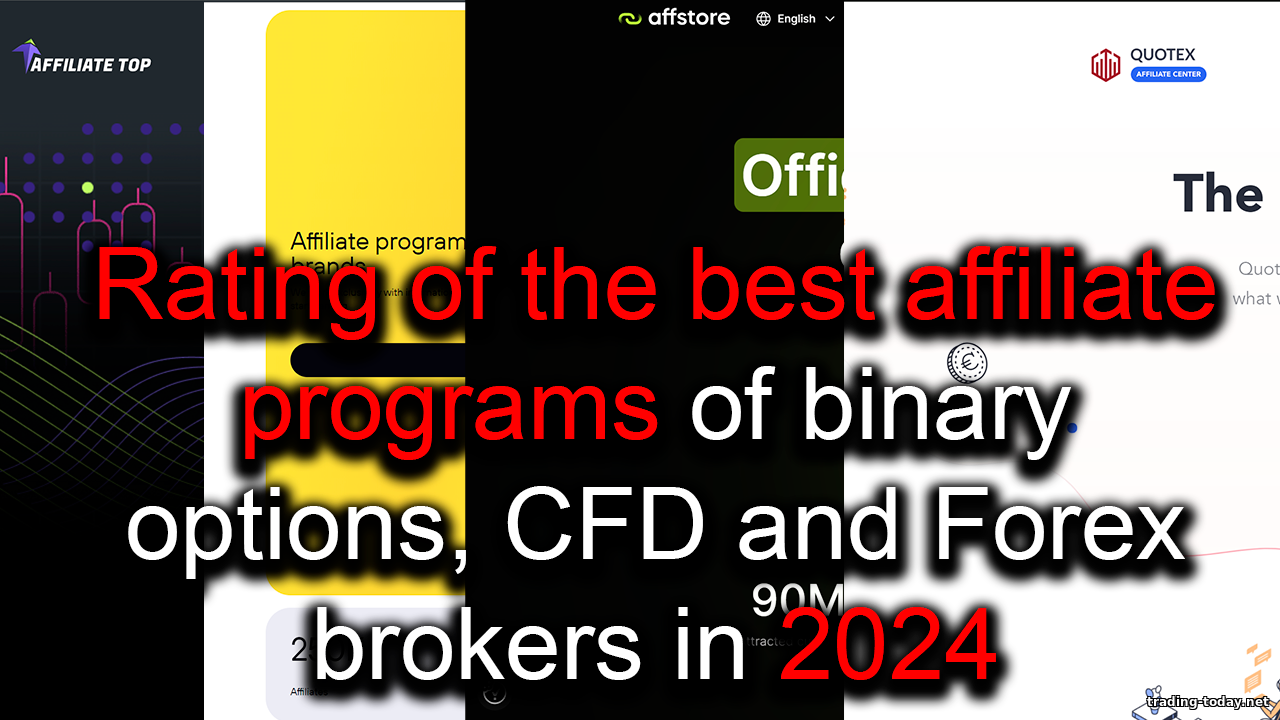
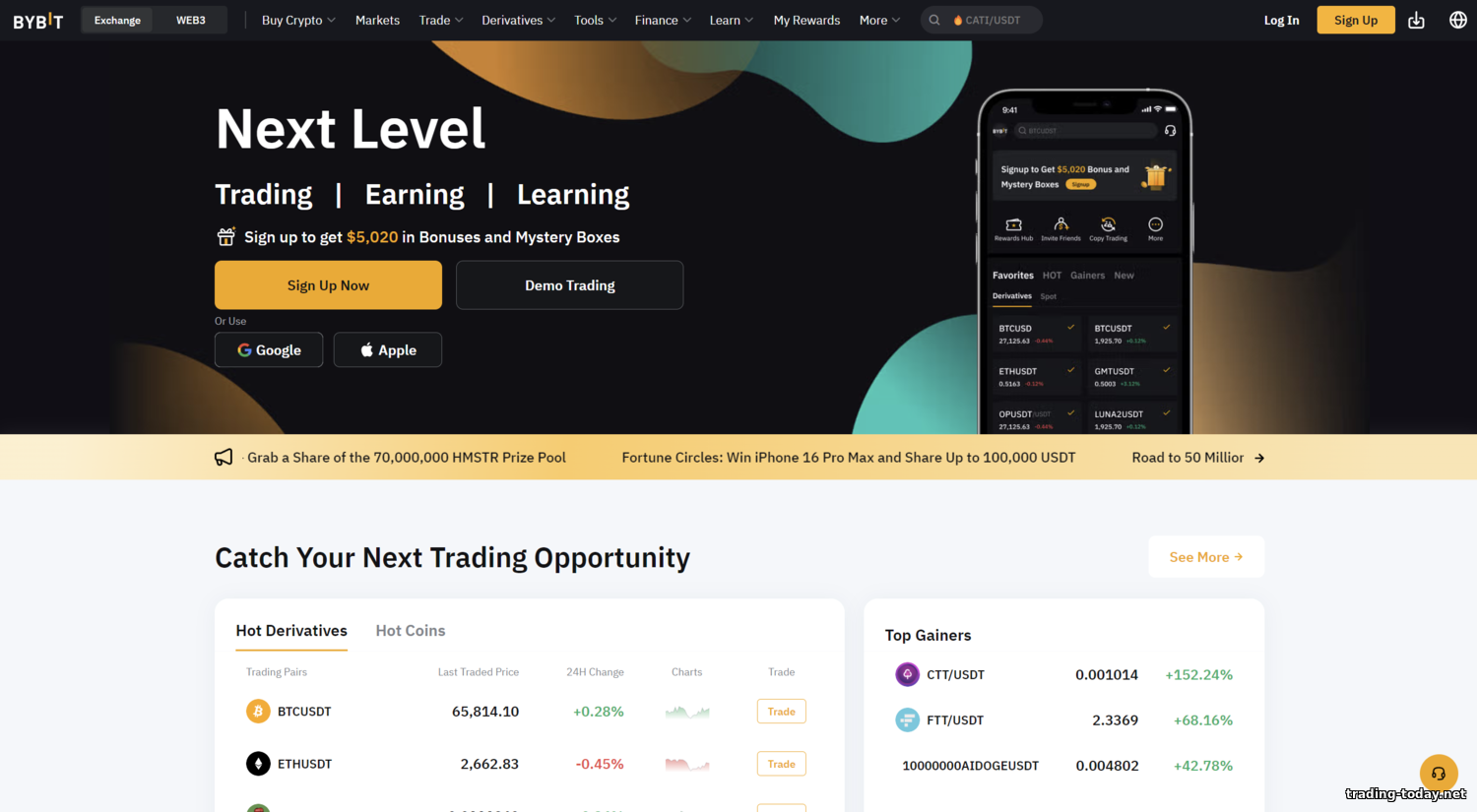

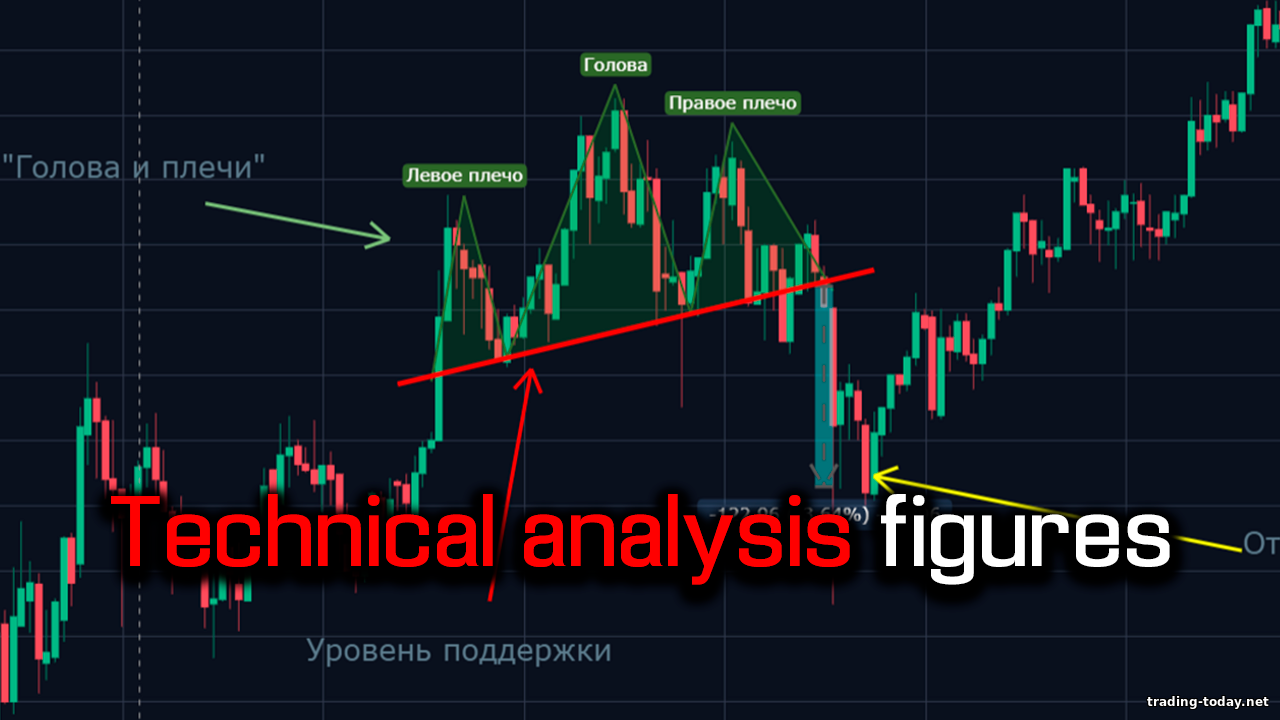
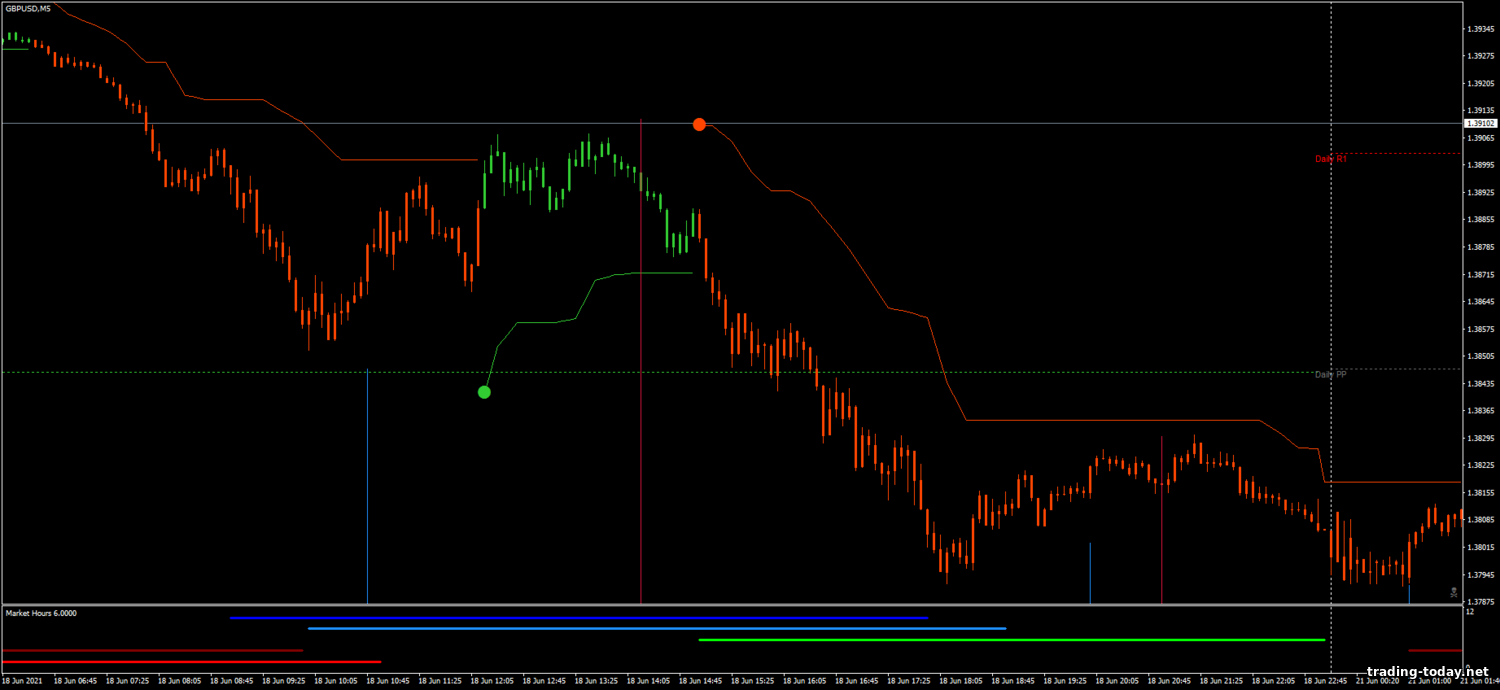
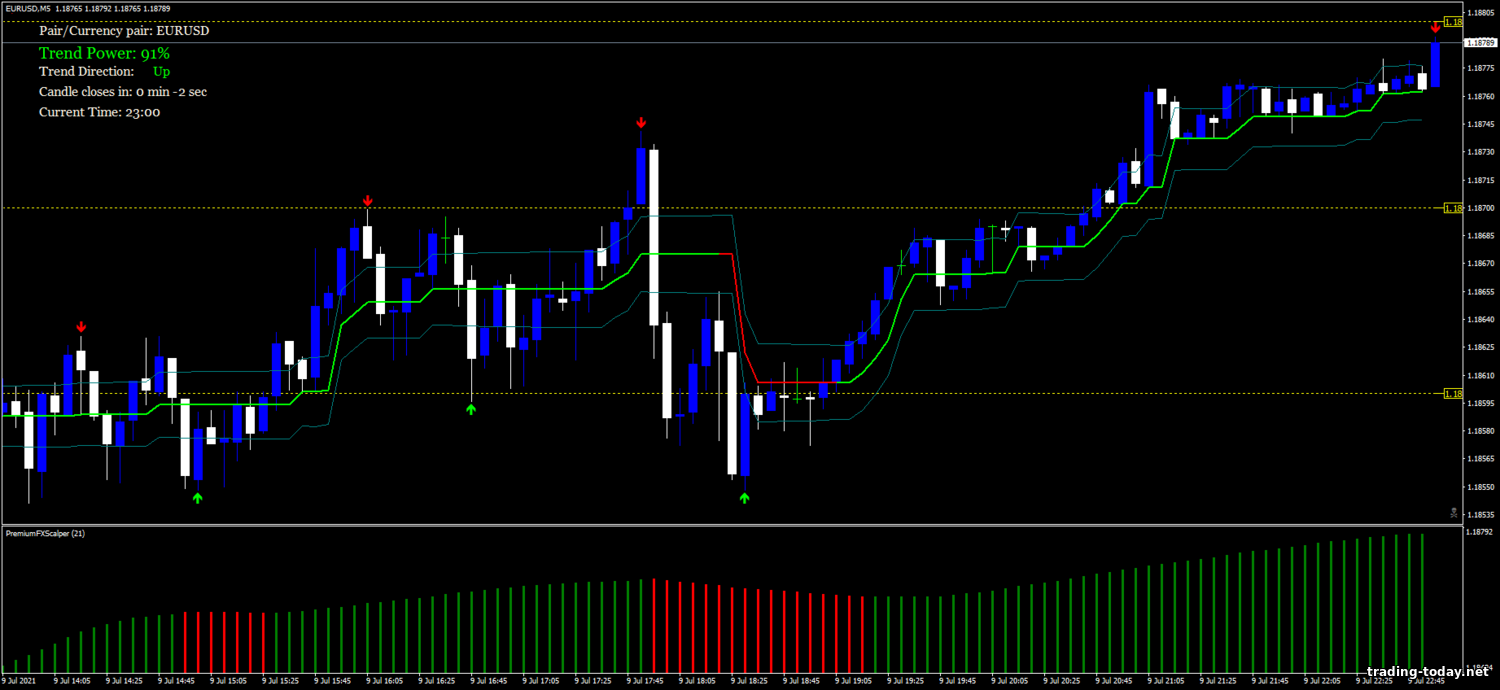
Reviews and comments